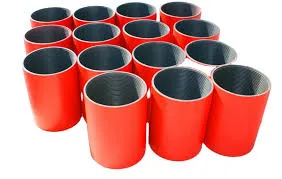- Afrikaans
- Albanian
- Amharic
- Arabic
- Armenian
- Azerbaijani
- Basque
- Belarusian
- Bengali
- Bosnian
- Bulgarian
- Catalan
- Cebuano
- Corsican
- Croatian
- Czech
- Danish
- Dutch
- English
- Esperanto
- Estonian
- Finnish
- French
- Frisian
- Galician
- Georgian
- German
- Greek
- Gujarati
- Haitian Creole
- hausa
- hawaiian
- Hebrew
- Hindi
- Miao
- Hungarian
- Icelandic
- igbo
- Indonesian
- irish
- Italian
- Japanese
- Javanese
- Kannada
- kazakh
- Khmer
- Rwandese
- Korean
- Kurdish
- Kyrgyz
- Lao
- Latin
- Latvian
- Lithuanian
- Luxembourgish
- Macedonian
- Malgashi
- Malay
- Malayalam
- Maltese
- Maori
- Marathi
- Mongolian
- Myanmar
- Nepali
- Norwegian
- Norwegian
- Occitan
- Pashto
- Persian
- Polish
- Portuguese
- Punjabi
- Romanian
- Russian
- Samoan
- Scottish Gaelic
- Serbian
- Sesotho
- Shona
- Sindhi
- Sinhala
- Slovak
- Slovenian
- Somali
- Spanish
- Sundanese
- Swahili
- Swedish
- Tagalog
- Tajik
- Tamil
- Tatar
- Telugu
- Thai
- Turkish
- Turkmen
- Ukrainian
- Urdu
- Uighur
- Uzbek
- Vietnamese
- Welsh
- Bantu
- Yiddish
- Yoruba
- Zulu
what is the difference between casing and tubing?
The Difference Between Casing and Tubing in Oil and Gas Drilling
In the realm of oil and gas drilling, the terms “casing” and “tubing” are frequently mentioned, and while they may appear interchangeable at a glance, they serve distinct roles within the drilling process. Understanding the difference between these two components is crucial for anyone involved in the drilling industry, whether they are engineers, geologists, or field workers. This article aims to elucidate the differences in function, design, and application between casing and tubing.
Casing An Overview
Casing is a series of pipes installed in the drilled borehole to provide stability and protect the well from various environmental and geological challenges. It is placed after the well has been drilled to the desired depth. The primary purposes of casing include
1. Support Casing reinforces the walls of the wellbore, preventing it from collapsing under the pressure of surrounding soil, rock, and groundwater.
2. Isolation It serves to isolate the various layers of rock and fluids found in the subsurface. This isolation ensures that the oil and gas being extracted from a specific formation do not mix with water or other fluids in adjacent formations.
3. Safety By preventing hazardous fluids or gases from migrating to the surface, casing enhances the safety of the drilling operation. Additionally, it contributes to the environmental protection of the area surrounding the well.
Casing is typically made from steel and can be found in various sizes and weights depending on the specific requirements of the drilling operation. The casing is cemented in place to ensure a secure fit within the wellbore and to facilitate the isolation of different formations.
Tubing An Overview
In contrast, tubing is the pipe through which oil and gas are produced from the well to the surface. Once the well is completed and the reservoir is ready for production, tubing is installed inside the casing. The role of tubing encompasses
what is the difference between casing and tubing?

1. Production Tubing allows for the controlled flow of hydrocarbons out of the well and into the surface equipment. It is designed to withstand the pressures and temperatures associated with the extraction process.
2. Replaceability Unlike casing, which is permanently installed and cemented in place, tubing can be removed and replaced as needed for maintenance or to accommodate changes in production requirements.
3. Efficiency Tubing is typically smaller in diameter than casing, allowing for higher flow rates and improved pumping efficiency. Its design focuses on facilitating the transportation of fluids, making it paramount in production operations.
Similar to casing, tubing is also made from high-strength steel, but the specifications can vary significantly. The choice of tubing size, weight, and grade depends on the specific characteristics of the reservoir and the expected production conditions.
Key Differences
While both casing and tubing are essential to the oil and gas extraction process, several key differences highlight their unique functions
1. Functionality Casing is primarily a structural component that supports the well and isolates various formations, whereas tubing is focused on the actual production and transport of oil and gas.
2. Installation Casing is installed after the well is drilled and is cemented into place for stability. Tubing, on the other hand, is installed after well completion and is not cemented; it can be retrieved or replaced as needed.
3. Design Specifications Casing and tubing have different design specifications related to their size, weight, and material properties, tailored to suit their respective functions within the well.
In conclusion, both casing and tubing play crucial roles in the oil and gas drilling and production process. Understanding the differences between these two components is vital for optimizing drilling operations, ensuring safety, and maximizing the efficiency of hydrocarbon extraction. As the industry continues to evolve, both casing and tubing technologies will likely advance, further enhancing their effectiveness in meeting the demands of modern energy production.
-
Tubing Pup Joints: Essential Components for Oil and Gas OperationsNewsJul.10,2025
-
Pup Joints: Essential Components for Reliable Drilling OperationsNewsJul.10,2025
-
Pipe Couplings: Connecting Your World EfficientlyNewsJul.10,2025
-
Mastering Oilfield Operations with Quality Tubing and CasingNewsJul.10,2025
-
High-Quality Casing Couplings for Every NeedNewsJul.10,2025
-
Boost Your Drilling Efficiency with Premium Crossover Tools & Seating NipplesNewsJul.10,2025







